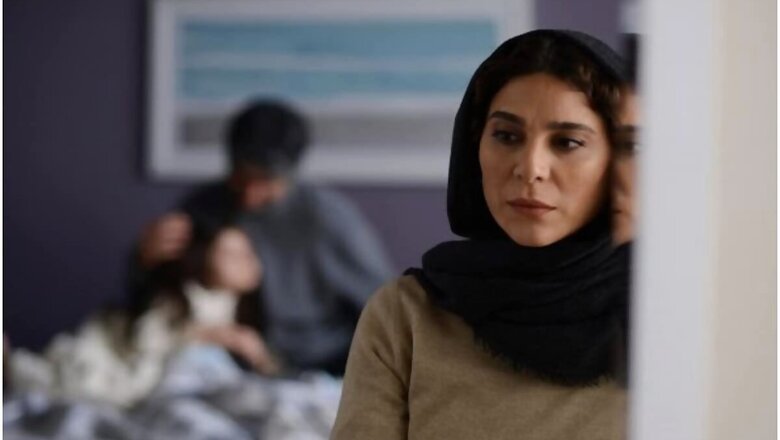
views
For over two decades now, Iranian films have left an indelible mark on the world of cinema. No film festival is complete without an Iranian film, although, in the last couple of years, the number of films has gone down, but just a little.
The cinema of Iran has been studied closely by academics and critics, while film lovers look forward to what comes out every year from the West Asian country that is usually in the news for all kinds of unhappy reasons.
This year at the International Film Festival of India (IFFI) in Goa, Farnoosh Samadi’s debut feature, 180 Degree Rule, is being screened. I have to admit that it is not among the best Iranian films I have seen, but it still has more than enough going for it to leave an impression. Like many Iranian films, this is also about a family and the conflicts within. A school teacher wants to drive down to another city with her little daughter for a wedding; the husband refuses to give her permission, the lady rebels, and then things go downhill – for the wife and, to a regrettable degree, the screenplay as well.
While the film is engaging, if you delve deeper, some of the moral choices made by the characters are questionable, and the ending is far from satisfactory. But on the surface of it, you have to admire how well the film is crafted in terms of deploying its resources, which has been the hallmark of Iranian cinema. Take the use of sound for instance: like in a Hollywood film, you don’t have to show a car tumble five times over from different angles to make an impact – the use of sound can achieve that to a large degree.
I distinctly remember watching the Iranian war film Big Drum Under Left Foot (2005) at IFFI that year, and what a remarkable film it was. It’s a story from the Iran-Iraq war where soldiers from both countries are stuck on either side of a trench. That possibly was the lowest budget war film ever made because all the action associated with war – the sound and the fury – was created using sound alone. I remember that film all the more because I saw it sitting five meters away from the screen; in those days, you could sit in the aisle, or anywhere as you pleased, and watch a film at IFFI.
Even though Iranian cinema burst onto the scene with the likes of Abbas Kiarostami, Mohsen Makhmalbaf and Majid Majidi becoming global names – followed by the Panahis and Farhadis – the first wave of Iranian cinema happened long before the Revolution that took place in 1978. In fact, the First Wave of Iranian cinema, which started in the early 70s, ended with the Revolution. The world, including yours truly, discovered Darius Mehrjui’s The Cow (1969) much later when Iranian cinema began to be taken seriously, even though the film won a couple of awards at festivals in its day.
Interestingly, even Ayatollah Khomeini admired the film and historians say that was the sole reason why the Second Wave happened – cinema thrived even after the Revolution, when many other good things in life got banned in that troubled country.
Then came Bahram Beyzai, Amir Naderi and the rest, followed by bigger names like Abbas Kiarostami, Mohsen Makhmalbaf and Majid Majidi. Most of them struggled to make films in Iran and moved out of the country at some point. Jafar Panahi, who was an assistant to Kiarostami, is under house arrest since 2010 and is officially banned from making films. Even so, he has managed to bring out more than a handful of films – a documentary This is not a film (2011), Closed Curtain (2013), Taxi (2015), and 3 Faces (2018) and a couple of documentaries last year.
If the greatness of Gandhi was his simplicity, Iranians have taught the world how to tell the simplest stories in the most engaging manner. Some are about human conflicts and choices; some are not even that complicated, or so it would seem. But yet, they are all finely layered; how many layers one can uncover depends on one’s sensibilities. I remember watching Kiarostami’s The Wind Will Carry Us (1999) and, the first time, I wasn’t exactly blown away by it. Later, I saw it with the director’s commentary where he explains the finer aspects of the scenes – it exposed my lack of understanding of cinema, but also enlightened me at the same time.
The restrictions on hand seem to bring out the best in Iranian filmmakers. The focus is clearly on the story and the storytelling and, more importantly, universal human themes. Back home, we have seen talented filmmakers mess up with big-budget films – an Anurag Kashyap with Bombay Velvet (2015) or Vishal Bharadwaj with Rangoon (2017) – they have made better films with much smaller budgets. The money spent on an action scene in a Marvel superhero movie is probably more than the entire budget of an Iranian film.
As Kiarostami famously said, “Good cinema is what we can believe and bad cinema is what we can’t believe. What you see and believe in is very much what I’m interested in.”
(The author is a film critic, columnist and cricket comemntator)
Read all the Latest News, Breaking News and Coronavirus News here
















Comments
0 comment